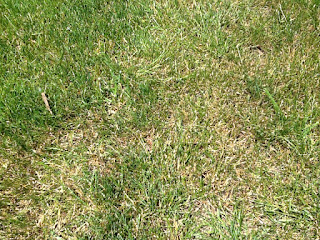June 21 is a happy day for most of us in the Midwest. It is the official first day of summer! The winter/ spring season is finally over and we all expect blue skies, sunshine and temperatures approaching 90 degrees. The occasional thunderstorm and shower doesn't last long and we are all heading to the pools, golf courses, lakes and outdoor entertainment venues. However, our lawns and plants encounter a much different experience starting with the longest day of sunshine for the year. Lawn grasses and plants are exposed to longer times of sun radiation and direct heat, high temperatures and limited precipitation. This means the lawns begin showing signs of stress including slow growth, limited leaf blade size and some even begin going into a dormant state. This results in a lawn that looks like it is browning and shrinking in thickness. The initial response from most homeowners is that this problem is from an insect, disease or even a misapplication of fertilizer or pesticide. But majority of the time it is simply mother nature in action. Now is the time to begin, if you haven't already, your lawn watering schedule to combat against high temperature soils and lack of natural precipitation.
Notice how the brown areas are in the most direct sunlight? This is not a coincidence.
Even though we get the occasional localized downpour, this is not enough precipitation for most full sun lawns. Most homeowners think that we have had enough rain this spring, because of the April floods, and that lack of precipitation is not a problem. However, according to Weatherbug, the Antioch area has only recorded 1.33" of rain since June 1 and only 8.49" since Jan 1! This is not nearly enough to keep up with the 1-2" needed weekly on a bluegrass lawn. Shaded areas are able to retain some of this moisture but the sunny areas are becoming very dry quickly.
These lawn pictures were taken 6/19/13 on a full sun lawn in Gurnee. There are no signs of insects or disease issues, just dry crumbly soil and 104 degree soil temps.
These two soil samples were taken from the same lawn on 6/19/13. Can you tell which one came from the shade and which one came from the sunny areas?
Lawn Doctor recommends to water at least twice a week and try to maintain 1-2" of precipitation on your lawns weekly. Also remember to mow your lawn no less than 2-1/2" to reduce further stress on your lawn.
Call or visit Lawn Doctor today to find more helpful lawn tips!




Comments